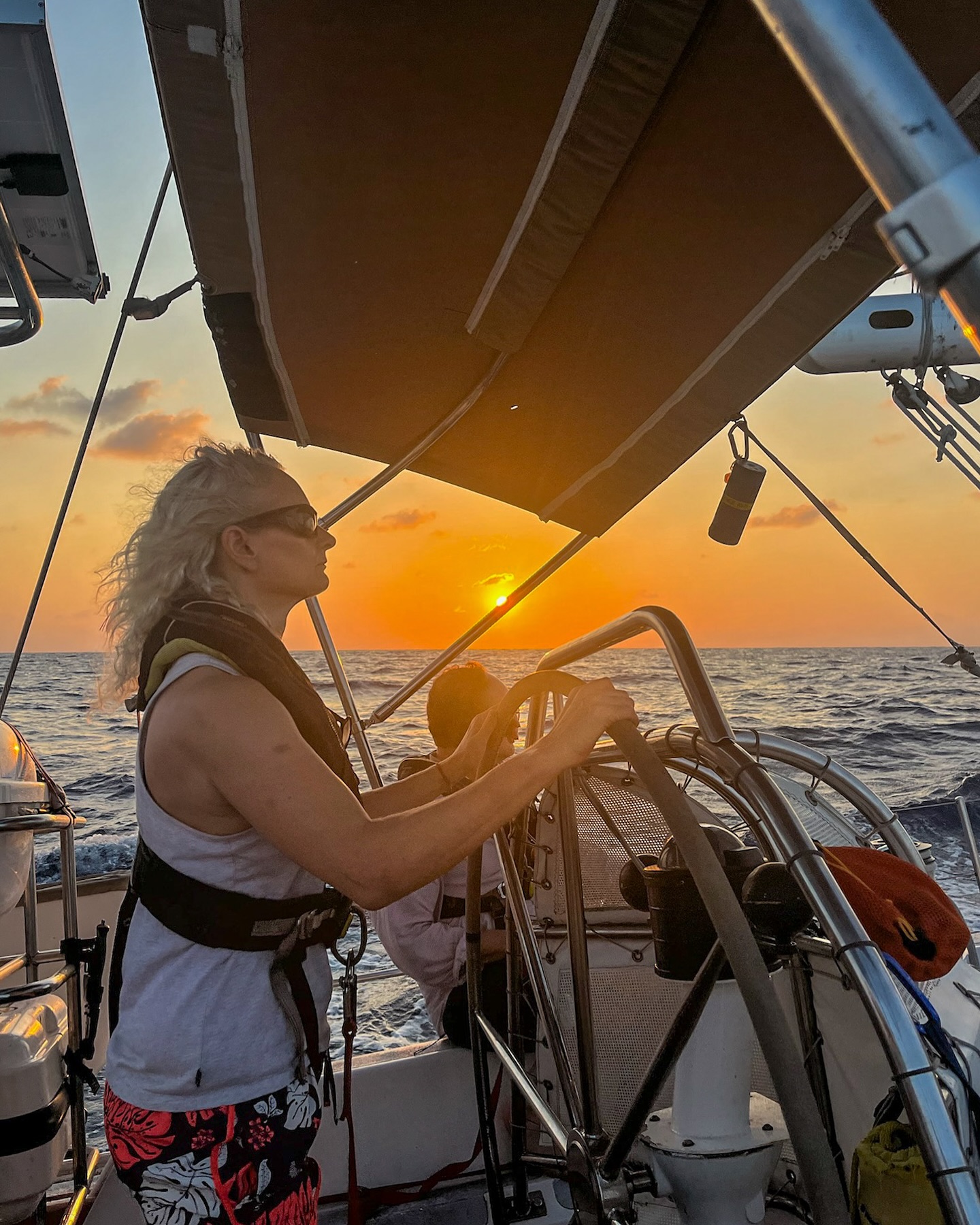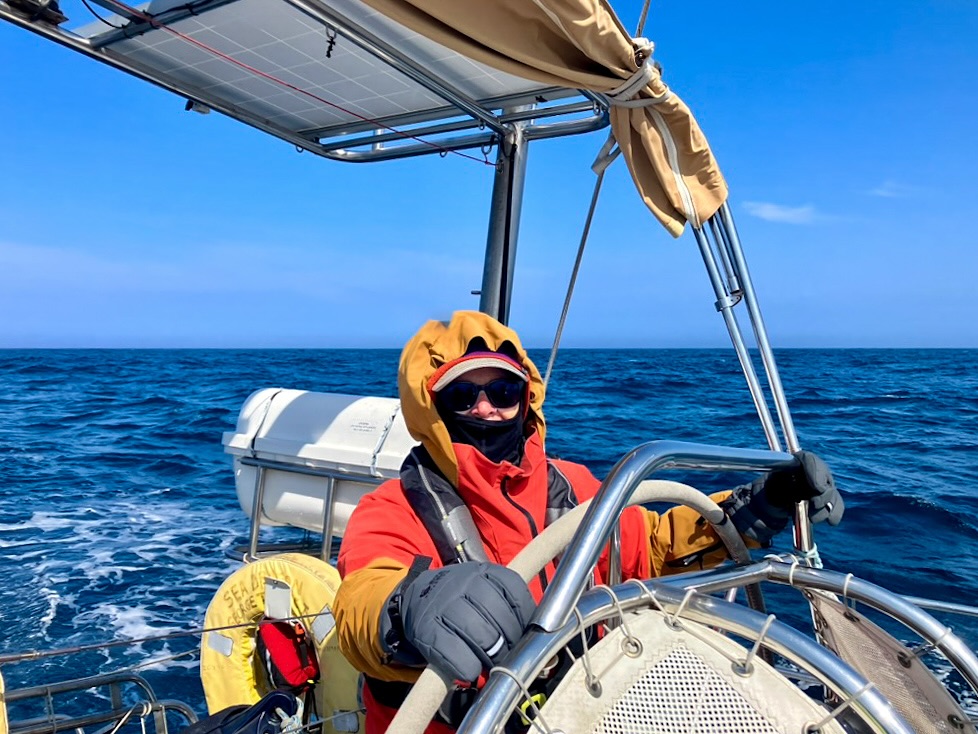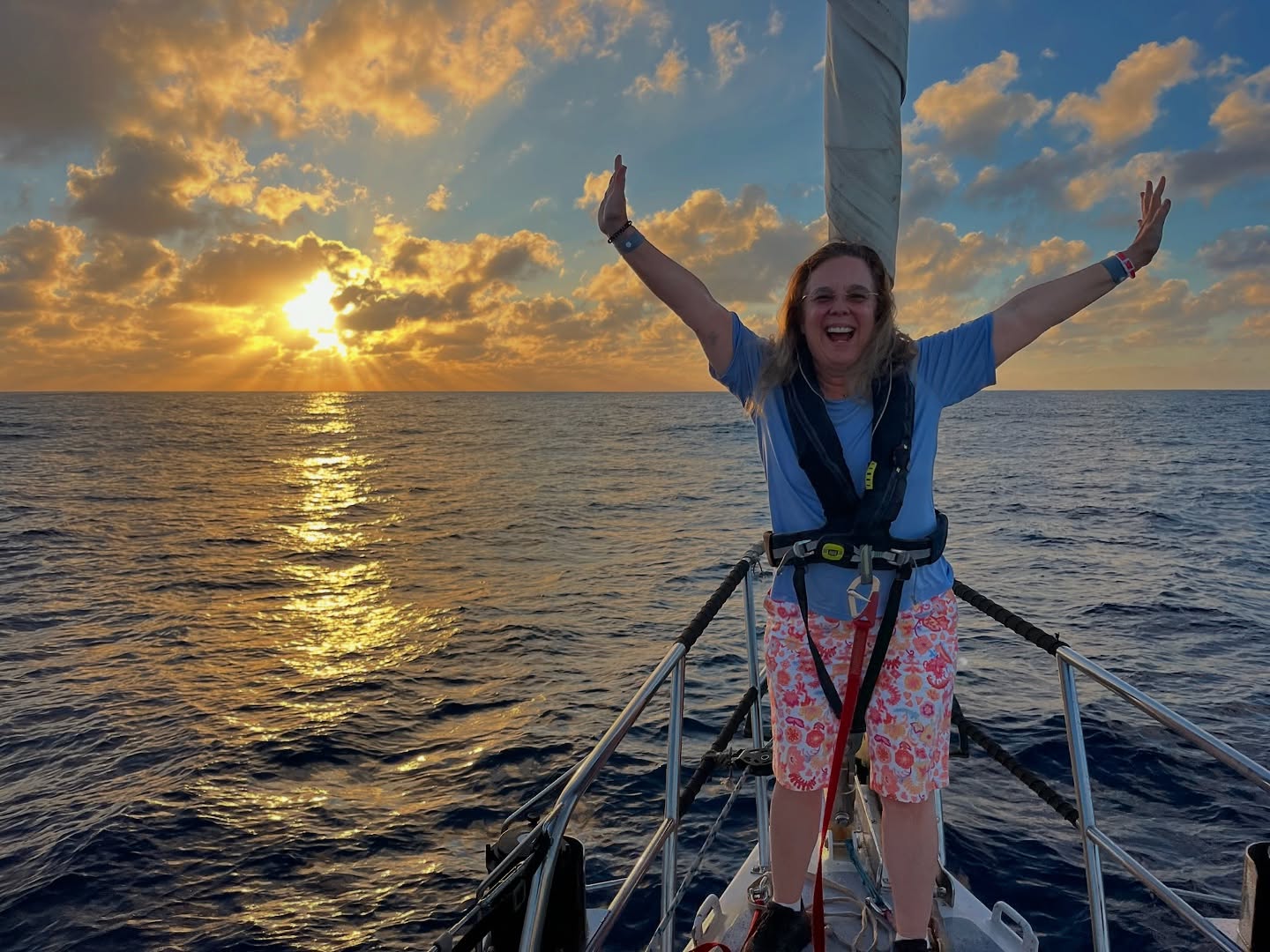…Pretty splendid!
by Charlie Triggs – Deckhand aboard Sea Dragon.
We have had good visibility, northern and easterly winds up to 10-15 knots, <3ft waves and temperatures of 70 – 80OF. This has made for some beautiful sailing and provided lots of opportunities to play with the spinnaker!
This past week since leaving Mexico, we have had daily runs of 210, 185, 172, 153, 170, 160, 135, and 167 nautical miles. On Thursday 5th April we reached our halfway point: 1,352nm from Mexico and 1,248nm to Hawaii. We find ourselves in the middle of quite a large expanse of water, with our destination being the nearest landmass and with 4,000 meters of water under the keel. In the middle of the ocean we are at the complete mercy of the weather and the wind is the master. Pushing us along our way, stopping us in our tracks, making the sea as flat as a mirror or as rugged as the Himalayas.
Photo by Charlie Triggs
Whenever you’re sailing it’s a good idea to know what the weather has in store. Weather forecasting is great at giving us prediction of conditions for the coming week, but when it comes to passage planning its good to be able to look at the bigger picture and for longer time periods. Thankfully big trends in global and ocean weather systems can be pretty predictable. Trade winds and areas of high and low pressure are affected by our sun and climate, causing them to fluctuate between seasons. This helps us to know the best and worst times of year to cross certain oceans and in which direction. So bear with me and I’ll try and explain why our Mexico – Hawaii leg should be a load of fun down wind sailing…
Photo by Charlie Triggs
The Sun heats the Earth along the equator. This causes warm air to rise and circulates North and South. This air then cools and descends, around 10o – 30o North or South of the equator. This creates an area of low pressure and light or absent winds along the equator known as the ‘Intertropical Convergence Zone’ or the doldrums. At 10O – 30O North or South of the equator (at the edges of the doldrums) the circulating air descends. This causes Northeastern winds in the northern hemisphere and Southeastern winds in the southern hemisphere. These are known as the trade winds. The trades are regular, steady winds blowing from 10-20 knots. The doldrums and trades will move north or south slightly as the suns declination moves up and down with the seasons (They will be further south in the southern hemisphere summer; when the sun is below the equator, and they will be further north in the northern hemisphere summer; when the sun is above the equator).
Using this slightly basic model we should have Northeastern trades pushing us along our westerly course all the way to coconut bras and hula skirts. But there are also areas of high and low pressure on the Earth’s surface, these can direct wind patterns and create storms. In the northern hemisphere wind circulates clockwise around a high-pressure system and anti-clockwise around a low-pressure system.
There is a large area of high-pressure northeast of Hawaii, roughly found North of 30oN. This North Pacific high is semi-permanent and tends to migrate North in summer and South in winter, along with the trends of the doldrums and trade winds. This high causes storms generated off Japan and Siberia to be pushed North and causes southerly winds to run down the West coast of North America. It also causes winds to blow from the East from Mexico to Hawaii. Sea Dragon stays around the latitude of 20ON for this passage, this keeps us between the 30ON high-pressure system and the doldrums. Slap bang in the trade winds. Perfect.
Cornell’s Ocean Atlas gives us some more detailed figures for wind strengths and directions, giving us a clue to what we might experience during these two weeks. Roughly speaking the first third of our trip we’ll have 50% Northern, 50% Northeastern winds at 10 -15 knots. The middle third predicts 75% Northeast winds at 10 – 15 knots. The final third of our voyage shows 50% Northeast and 50% Easterly winds, this builds to wind strengths up to 25 knots. So far these averages have been rather accurate. We’ve had some light winds and motoring over the past week, but as I’m writing this Eric and Andy are wrestling with the wheel, flying along at 9 knots with the spinnaker up in a pleasant 15 knot breeze. The forecast shows the wind sticking around over the weekend so we the fun fast downwind sailing should continue, yippee!!
Photo by Charlie Triggs






























